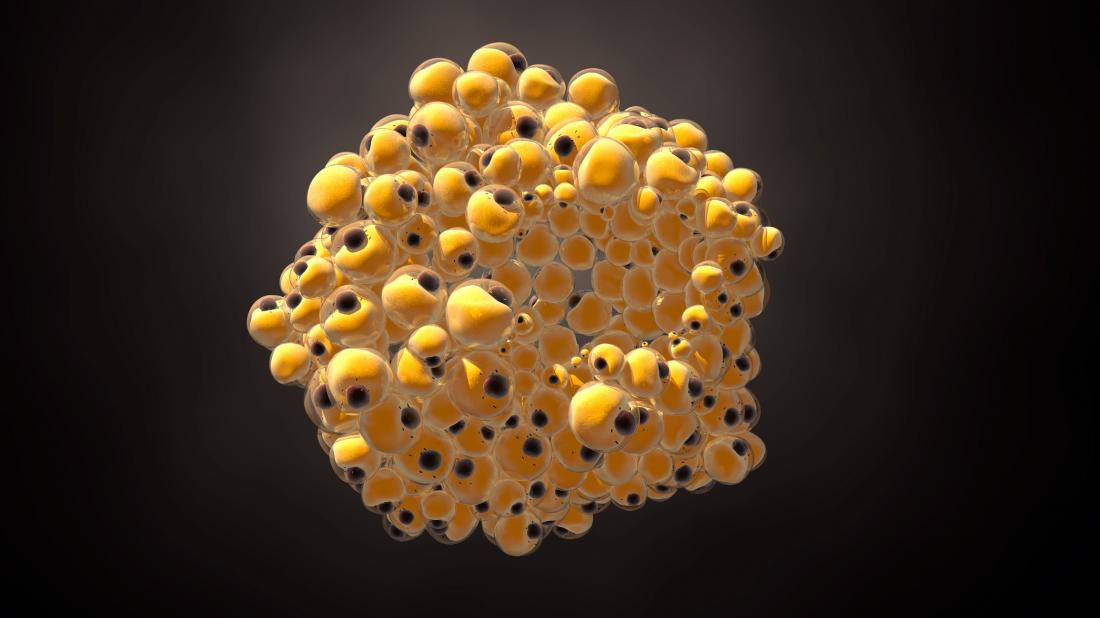Ancient survival mechanism may contribute to obesity epidemic

New research on mice suggests that a mechanism that likely evolved to prevent starvation could be contributing to obesity.
The mechanism involves the protein receptor for advanced glycation end products (RAGE).
The new finding reveals that RAGE functions as a brake on the release of fat from fat cells.
A study that features in the journal Cell Reports describes the effect of deleting RAGE in mice.
Researchers at NYU School of Medicine in the city of New York, together with colleagues from other United States research centers, fed two groups of mice a high fat diet. They had removed RAGE from the fat cells of one group and left the other group intact beforehand.
After 3 months on the high fat diet, the mice without RAGE in their fat cells had gained 75% less weight than the unmodified mice.
Both sets of mice ate the same amount of food and did the same amount of physical activity.
In another experiment, the team transplanted RAGE free fat tissue from the modified mice into normal mice and put them on a high fat diet for 3 months. These mice also gained less weight than unmodified mice.
The researchers observe that it makes sense that the body has evolved a mechanism for hoarding stored energy for when nutrients are scarce. However, these experiments suggest that an abundance of nutrients has a similar effect.
"We [have] discovered," says senior study author Ann Marie Schmidt M.D., a professor of endocrinology at NYU School of Medicine, "an antistarvation mechanism that has become a curse in times of plenty because it sees cellular stress created by overeating as similar to stress created by starvation — and puts the brakes on our ability to burn fat."
Obesity and energy balance
According to the World Health Organization (WHO), there has been a near trebling of obesity worldwide since 1975.
WHO figures show that more than 1.9 billion adults were overweight in 2016. Of these, more than 650 million had obesity, which is about 13% of the world's adults.
The causes of obesity are complex, and scientists do not fully understand them. Essentially, the condition results from an imbalance between the energy in the food that people eat and the energy that they use.
Over the decades that obesity has grown to epidemic proportions, people's eating and living patterns have undergone considerable changes.
For example, there has been a global increase in the consumption of high fat, energy dense foods. At the same time, people have engaged in lower levels of physical activity as lifestyles and occupations have become more sedentary.
These changes have occurred over a few decades, whereas the energy balance systems of the human body are the result of thousands of years of evolution.
Primal systems under evolutionary pressure
Prof. Schmidt and her colleagues suggest that under evolutionary pressure, and in the interest of efficiency, animals' bodies adapted ancient systems as mechanisms to survive starvation.
These primal systems were those that converted food into energy for cells, aided recovery from injury, and generated heat to protect against the cold. Signaling molecules, such as adrenalin, were part of these ancient systems' hardwiring, which detects cell stress.
RAGE blocks the burning of fat to conserve energy. The survival mechanism works for starvation, cold, and injury. However, the same mechanism responds to overeating because that also puts stress on cells and triggers the same signals.
Findings from the recent and previous studies have revealed that advanced glycation endproducts (AGEs) trigger RAGE in human tissues.
AGEs form when blood glucose combines with fats and proteins. People who are aging, have diabetes, or who have obesity typically have raised levels of the compounds.
Other molecules that can trigger RAGE to block fat burning are those that cells release when stress causes them to die and disgorge their contents.
